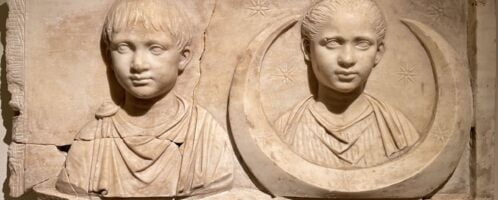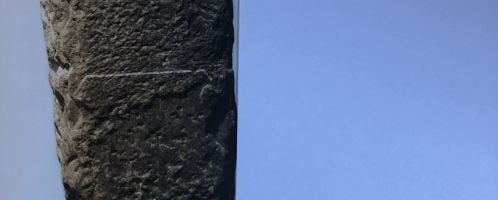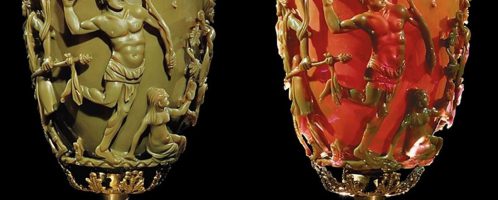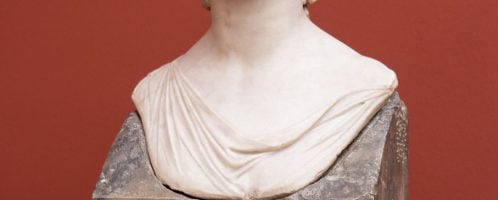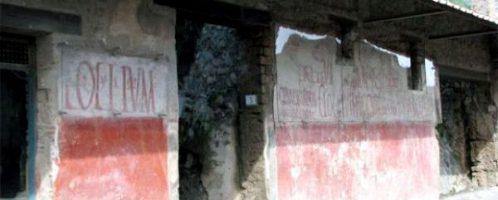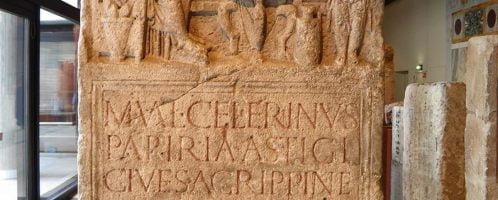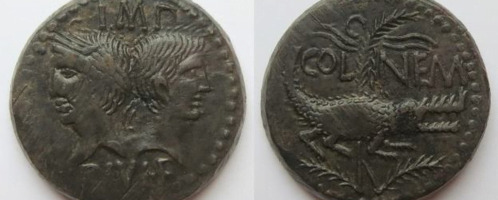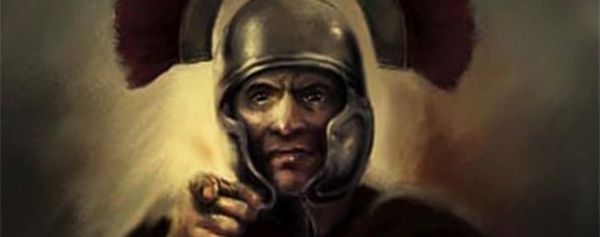If you have found a spelling error, please, notify us by selecting that text and pressing Ctrl+Enter.
Curiosities of ancient Rome (Artifact)
The world of ancient Romans abounded in a number of amazing curiosities and information. The source of knowledge about the life of the Romans are mainly works left to us by ancient writers or discoveries. The Romans left behind a lot of strange information and facts that are sometimes hard to believe.
Roman bas-relief showing portraits of boy and girl
Roman bas-relief showing portraits of a boy and a girl. The crescent moon and the stars around the girl’s head suggest that she is in heaven or that she remained a virgin until her death. The object is dated to the end of the 2nd century CE and is in the collection of the Denmark National Museum in Copenhagen.
Stone of Carausius
Stone of Carausius is a preserved stone from the end of the 3rd century CE, on which the name of the usurper Carausius was engraved. Interestingly, at the other end of the stone is the name of Emperor Constantine. After the fall of Carausius, his name was removed from public places (damnatio memoriae), and the stone was simply turned over and his inscription was hidden.
Lycurgus Cup
Lycurgus Cup (also known as the Lycurgus chalice) is an example of the advancement of Roman culture. Depending on the angle at which the sun’s rays fall on the cup, the decorations of the vessel change in different colours. When lit from the front, they are green. However, with light coming from the rear, they turn red. Thus, it can be said that the Romans were pioneers of nanotechnology!
Small Roman glass basket
Small Roman glass basket that is approximately 1,800 years old. Object found in Syria.
Roman herma showing young woman named Statia Quinta
Roman herma showing a young woman named Statia Quinta. The inscription on the statue gives her name along with the letters L.L., which researchers translate as Lucia Liberta, meaning “freedwoman of Lucius”. The object was found on the northern shore of Lake Nemi (central Italy) in Diana’s sanctuary in 1887.
Roman slogans on walls
On Roman walls, there were often inscriptions, which often did not differ from ours. Here are some examples.
Roman tombstone of Marcus Valerius Celerinus
Roman tombstone of Marcus Valerius Celerinus, Roman soldier of the Legio X Gemina Pia Fidelis. The tombstone was commissioned by his wife, Marcia Procula. Celerinus was originally from southern Spain, however a tombstone was discovered in Cologne, Germany, suggesting that he settled there after his retirement. Currently, the object is located in the Romisch-Germanisches Museum.
Coin in honor of victory at Actium
Roman coin was minted in honour of Octavian Augustus’ victory over Mark Antony and Cleopatra in the battle of Actium in 31 BCE. Octavian and his friend and commander Marcus Agrippa are depicted on the obverse. On the reverse, there is a crocodile pinned to a palm branch, which symbolizes the joining of Egypt with Rome.


